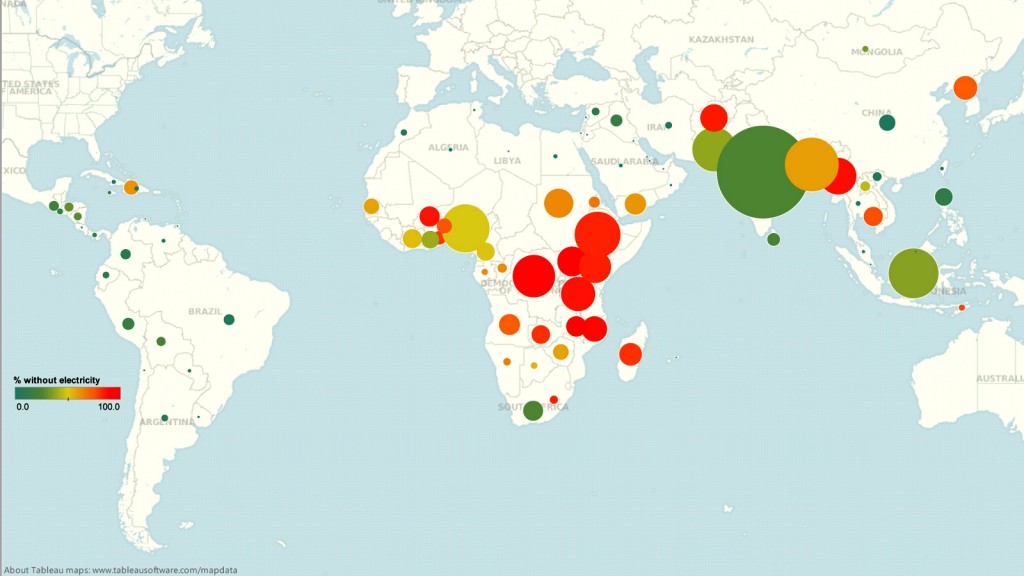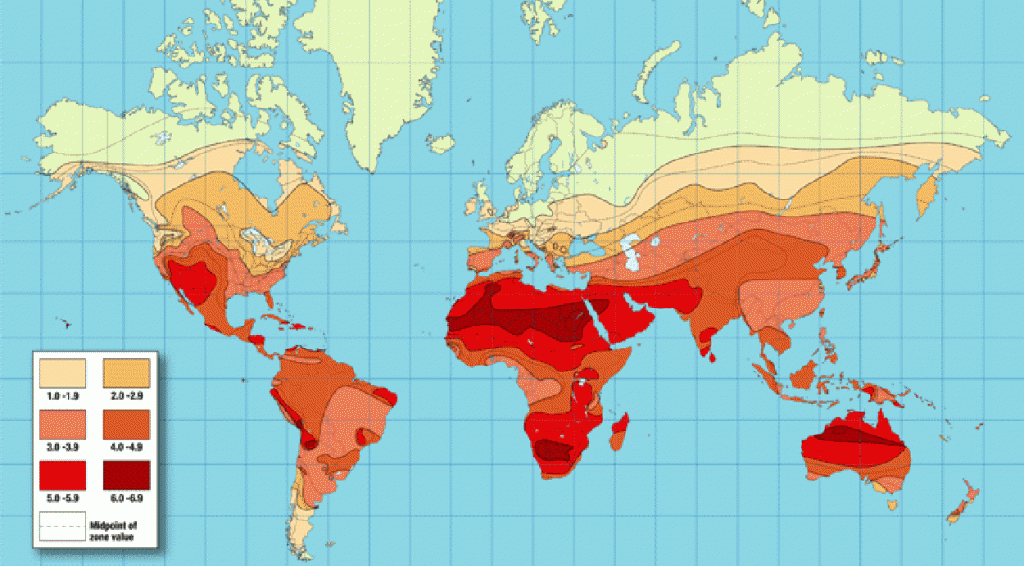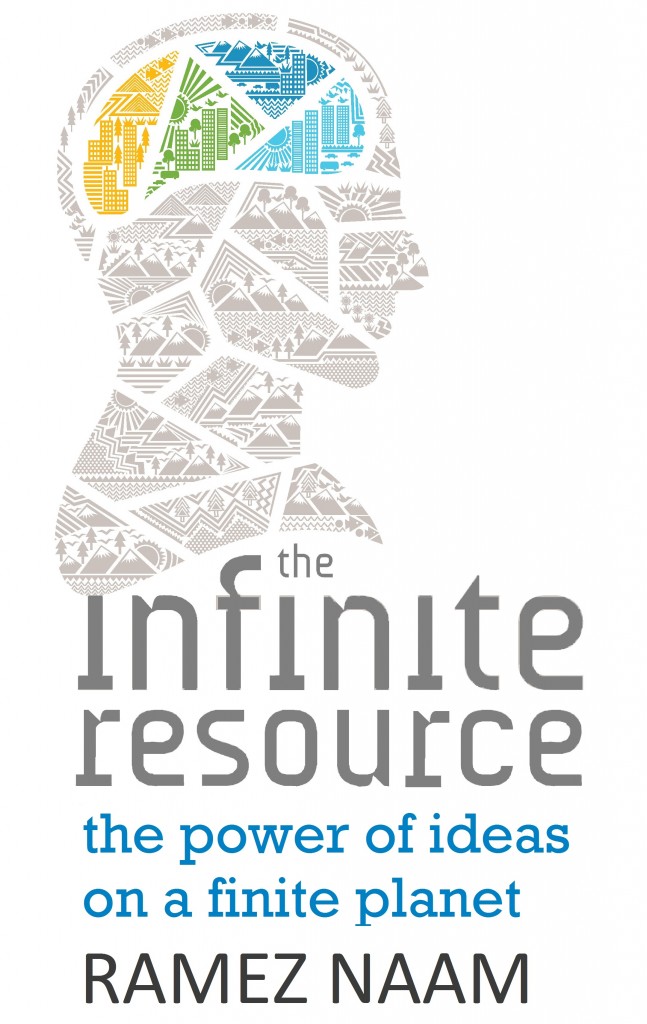The Sunlight is Where the Energy Poverty Is
The future world energy system will undoubtedly be a mix of many different energy technologies – nuclear, hydro, wind, solar, and some fossil fuels for decades and decades to come. Yet I’m particularly optimistic about solar. One reason is its incredible price trajectory, a trait that no other modern energy technology shares. Another is that solar availability lines up extremely well with the regions of the world where people live in energy poverty, generally completely off the grid.
Off-the-grid, diesel electricity often costs 3x as much as grid electricity. And running new power grids out to these location is an expensive, capital-intensive project. In these areas in the developing world, decentralized solar is particularly well positioned as a tool to provide energy to meet people’s needs in a low-carbon way, without the enormous cost of extending a national grid. It’s similar to the leapfrogging of mobile phones past landlines.
See for yourself. Here’s a map of energy poverty around the world:
And here’s a map of solar availability around the world (total amount of sunlight falling per year):
The match isn’t perfect. But the availability of sunlight is tremendously higher in Africa and South Asia than it is in, say, Germany, where solar power has been championed the most this past decade. The US and Australia are also particularly well endowed.
I write much more about solar, wind, energy storage, and why innovation in them is a great reason for hope in combating climate change even as we lift billions out of poverty, in my book on solving the environmental and natural resource challenges that face us: The Infinite Resouce: The Power of Ideas on a Finite Planet



